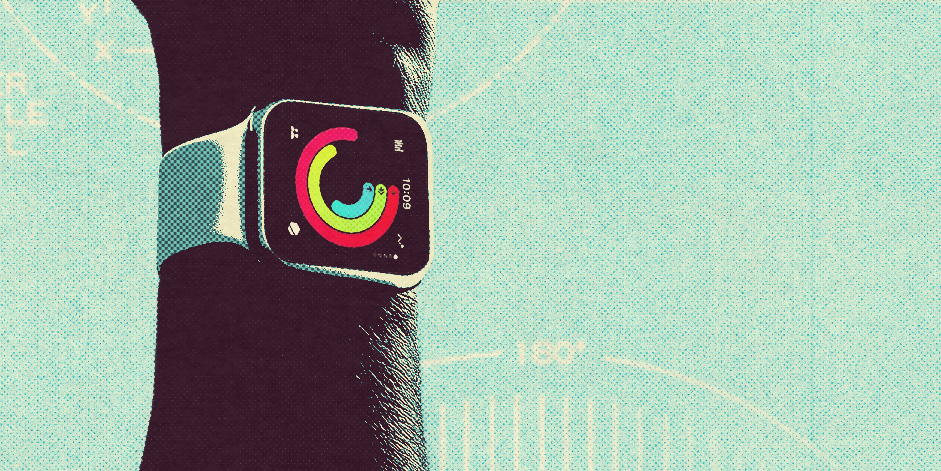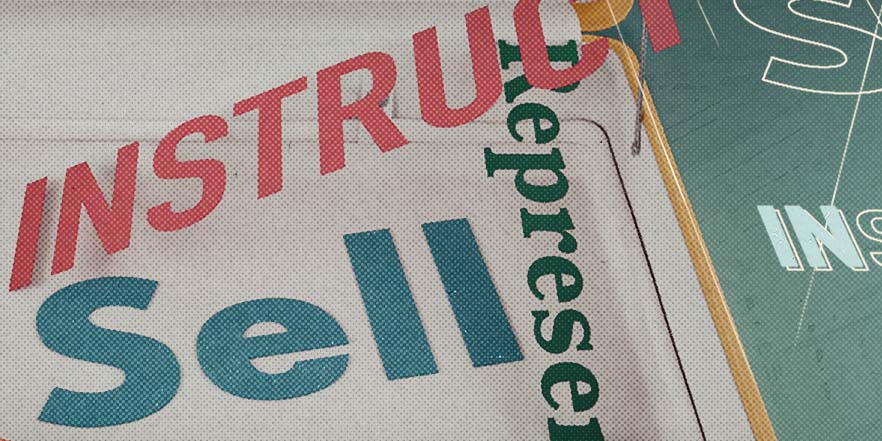Last year, I was chatting with our VP of Design about some of the content design team’s biggest challenges — being seen as an optional add-on to “real” design, limited headcount, and the style guide sitting unread — all leading to inconsistent experiences. These problems may feel familiar, since just about every content designer I’ve ever spoken to has similar frustrations.
I was excited to suggest creating a content design system as a solution. I thought it would help designers follow our content standards without having to search through our style guide, and I believed it could help reinforce the idea that content designers are designers too.
Then he asked, “How is a content design system different from a design system?”
Great question. If content is an integral part of design (it is!), shouldn’t it be an integral part of the design system? And could calling it a content design system be signaling that it’s a tool meant for content designers, rather than a shared foundation for the whole team?
Ever since that conversation, I’ve reframed my thinking. It’s less about content design systems and more about mature design systems.
That might sound like a nitpicky, semantic distinction. But words shape perception. And perception shapes how teams work together, how systems grow, and how content shows up in the product. If we want to build systems that scale consistent, high-quality experiences, we need to be intentional not only in how we design content, but also in how we talk about it.
Content isn’t (just) copy
Speaking of nitpicky, semantic things — part of what makes the content vs. copy distinction tricky is that even when content is represented in a design system, it’s often limited to copywriting guidance:
- Keep button text under 24 characters
- Buttons should start with a verb
- Don’t say “click here” or “click the button below”
All of that is good. Necessary, even. But content design is so much more than choosing the words to put in a container. It’s how information is structured through an experience to facilitate the user’s jobs to be done. And yes, it’s the components and the words that go in them.
So when I say “content,” I’m not only talking about word choices. I’m talking about how experiences are shaped through structure, logic, and language.
Here’s what that looks like:
- Information architecture: Organizing and sequencing content to support clarity, flow, and decision-making
- Timing and placement: Choosing the right moment and location to surface information, based on user context
- Flow logic: Guiding users through tasks with clear next steps, recovery paths, and mental models
- Prioritization and hierarchy: Highlighting what matters most on a screen and knowing what can wait
- Voice, tone, and trust: Shaping how the product speaks to users in ways that build clarity and confidence
Get more valuable content design articles like this one delivered right to your inbox.
What’s the alternative to a content design system?
I’m not saying you should throw out your content design system if it’s working for you. But it might be a more effective use of your time to build a mature system that includes content by design.
Being a core member of a team that builds systems for all designers will position you as a “real” designer. Your perspective on how to structure information will ensure that content is considered during early design stages, whether you’re in the room or not. And logically structured content makes it a lot easier for anyone to write the copy.
It starts with people
Influence in systems work doesn’t start with a big project. It starts with consistent collaboration. At Justworks, I’m part of the Shared Experiences team — a group that focuses on building systems and frameworks to support the broader product experience. We’re lucky to have a manager who actively advocates for content design, as well as a team of product designers who are deeply thoughtful about structure, sequencing, clarity, and how information flows.
Being on the right team with the right people makes it easy to bring a content perspective into systems work. But when I started at Justworks, the Shared Experiences team didn’t even exist yet. I wasn’t included overnight.
With some help from my manager, here’s how I made it happen:
- I set quarterly goals to collaborate more with systems designers
- We identified real opportunities to contribute
- I stayed engaged, even when things felt slow or messy
How I got my seat at the table
One of my first systems projects was helping to define and document content-heavy patterns. We started by consolidating our email patterns and creating a new template. As a core communication tool, email was a natural entry point for collaboration, making it easy to show the value of content design in shaping strategy and structure.
Our patterns work soon expanded into other areas, like forms and empty states. By bringing content thinking into these early projects, I built trust and relationships that made deeper collaboration possible. When the Shared Experiences team officially formed, it made sense to everyone that I’d be on it. I wasn’t an outsider making a case for content design; I was already doing the work.
Leveling up our design system
Our design system used to be a collection of foundations (colors, fonts, etc.) and components (buttons, input fields, etc.). It gave us a great toolkit for building UI. But while our experiences looked and behaved similarly, they weren’t always coherent. We were missing layers that could help us consistently display the objects that make up the Justworks experience.
Designers from Shared Experiences developed a new, more mature system: view architecture. As part of the team, my perspective and feedback helped shape the structure and documentation of our new system. View architecture has dramatically changed how we create experiences, making them more logical and cohesive. It’s baked content thinking into every stage of design.
How it works

In a mature design system, content isn’t an afterthought. It’s embedded into every layer, from high-level layouts down to individual components. Each part of the system gives designers the tools to make thoughtful decisions.
Views
High-level screen layouts based on user intent and product context
Views set the stage for information architecture, narrative flow, and clarity of purpose. By tying layout to intent, they help designers to think critically about what users need to know and when, at a structural level, not just a visual one.
.png)
Workflows
Step-by-step processes that help users complete tasks
Workflows are where sequencing, logic, and transitions matter most. Well-defined workflows give designers the guidance to maintain narrative continuity, reduce cognitive load, and ensure each step builds on the last.
.png)
Patterns
Repeatable combinations of components used in workflows — like filters, forms, or empty states
Patterns allow designers to focus on contextual storytelling: What’s happening in this moment, and what does the user need to know or do? Patterns come with built-in expectations for tone, detail, and structure, which promotes consistency in both UI and communication strategy.
Components
The foundational building blocks of the UI
When components come with copy guidance, designers are more equipped to make small but meaningful decisions that reinforce clarity and consistency.
Together, these layers create a shared language and set of constraints that actually enable creativity and strategic thinking. Designers don’t need to be content experts to build better experiences because the system itself guides them to make better content decisions at every stage.
Communication patterns
If you already have a well-developed design system that includes the logic for how pages and flows should be structured, keep going! There’s so much more room for content to influence experiences.
At Justworks, we’re working to bring more structure and consistency to how we communicate with users through both short-term sprints and ongoing systems work.
Communication framework
One recent effort involved a small, cross-functional group of designers. We focused on building a high-level framework that considers how different types of communications support users across their journey. Rather than fixating on specific copy or components, we looked at broader patterns like the intent and urgency behind different types of messages.
We asked questions like:
- How does communication build or spend trust?
- How do we ensure we only spend trust in the right moments?
- How can communication support transitions through different phases of the customer lifecycle?

This work is helping us lay the foundation for a more deliberate communication strategy, starting with the product and building influence across the broader customer experience.
Systems communications
In parallel, I’ve been working with a product designer on a longer-term systems effort to define communication types and behavior patterns in more detail. For now, we’re focused on notifications and alerts and how those show up across various surfaces.

We’re continuing to build on the communication framework, mapping higher-level concepts to practical, repeatable patterns that teams can use day to day.
Why it matters
This work helps teams across the organization align around a shared approach to communication. Designers, product marketing managers, and copywriters can follow clear, flexible guidelines, even when content designers aren’t directly involved.
The goal isn’t rigid standardization. It’s to make strong content practices more accessible and repeatable — so the product communicates with greater consistency and clarity, even as it grows.
To wrap up
Content should be treated as a fundamental part of a mature design system — one that helps teams consider information architecture, flow, prioritization, and communication, not just what words go in which components.
This kind of systems thinking takes time. It requires trust, collaboration, and persistence. But it’s also one of the most powerful ways to scale content design.
Here are a few ways to get started:
- Start small, and stick with it. One thoughtfully structured pattern or component can open the door to deeper collaboration. Participation builds trust, and trust builds influence.
- Frame content as part of design, not an add-on. The more content is integrated into existing systems and workflows, the less likely it is to be treated as something extra.
- Work with your systems team to influence structure, not just copy. Get involved in shaping views, workflows, and templates. That’s where decisions about clarity, hierarchy, and flow are made, and it’s where content has the most impact on the experience.
- Define content behaviors, not just words. Think beyond microcopy. Focus on when and how messages show up, what kind of trust they build or spend, and how they support users across their journey.
Taken together, these actions can shift how content design is perceived, even in organizations with limited resources. They help establish content as a core part of design, scale your impact, and create space for content to influence the experience from the inside out.

In the end, you don’t need a content design system to scale your influence. You need a mature design system that treats content as design — because it is.






